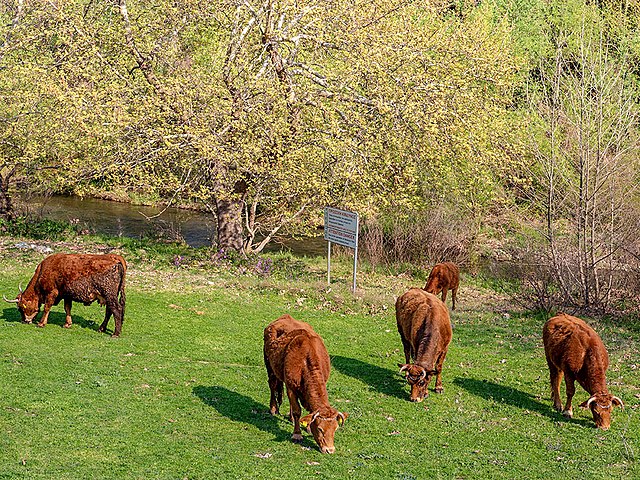Agricultural give-outs by the European Union (EU) have clouded Greece’s livestock farming after the prosecution of 100 agricultural subsidy fraud suspects.
According to Politico, these recipients of one of the most important farmer support funds by the EU got it fraudulently.
Prosecutors had by end February handed the mainly Cretan suspects some 2.9 million euros ($3.5 million) in damages.
The indictment covers the 2017-20 period when the individuals loosely obtained livestock subsidies via the country’s OPEKEPE paying authority.
Only lately have is it emerged that the majority of the successful applicants not only did not live in the areas they registered for but own no land at all. The case, which began on February 18, 2025 will go into the next hearing, May 16.
Crete’s Unique Stock Breeding
The news spotlights Crete’s fame for its stock breeding culture that is the envy of the region for both genes and fodder diversity.
Here, sheep, goats and cattle enjoy local flora such as wild herbs that makes domestic meat highly coveted for its nutrition.
This unique stocking culture has helped keep the industry stable, including rising stock numbers despite declining livestock farms.
In the 2010-20 decade, Crete and overall Greece hiked livestock numbers by 9% while Europe experienced a 4% decrease.
Why Livestock Subsidies?
With such stocking highlights, the question emerges on why there is a need for subsidies, which often lead to economic fraud.
The answer lies in the generosity of the EU’s Common Agricultural Policy (CAP). The policy channels 82% of its subsidy support to the continental livestock sector, according to the journal Nature.
With such a massive share in their favor, farmers often apply when animal product prices are falling or stock numbers are down. Indeed, livestock farmers in the EU (27) can access 38% direct live animal funds or 44% for animal products.
What is intriguing is that these same subsidies cause 84% of the total emissions in the EU’s food production industry.
It therefore comes as no surprise that prosecutions against Greece’s livestock farming sector should surface. For the larger picture on the southwest European nation’s livestock sector, skim the statistics below.
Greece Livestock Farming Statistics
Greece has a rich history of shepherding culture that was still earning poetic praise during the Hellenic era (400s-100s B.C.). In the modern times, however, livestock rearing practice has been fluctuating, with livestock farm proliferation halving in the 2010-20 decade. Heads of cattle, sheep, and goats have also been fluctuating. While two of the three stock, namely cattle and sheep, grew in the last count in 2023, goats declined. The final tally in 2023 was 622,400 head of cattle, 7,892,300 sheep and 2,747,400 goats.
The table below looks back to the stock number shifting pattern of the 2019-20 period, courtesy FAOSTAT.
| Year | Cattle [Head] | Sheep [Head] | Goats[Head] |
| 2023 | 622,400 | 7,892,300 | 2,747,700 |
| 2022 | 581,600 | 7,378,400 | 2,960,900 |
| 2021 | 614,100 | 7,690,900 | 3,135,100 |
| 2020 | 631,500 | 7,721,800 | 3,149,000 |
| 2019 | 530,000 | 8,427,000 | 3,580,000 |
What are the key patterns of livestock density in Greece?
Greece has a low livestock density in comparison with major livestock-keeping countries, like Ireland. In the 2010-20 period, 23.5% of farms in Greece kept livestock while in Ireland almost every farm (91.2%) had domestic animals. Another density pattern during the same period is the growth rate of farms with animals, which retracted by -50% in Greece. However, stock numbers increased by 9% in the 2010-20 period, even when the EU’s average fell by 4%.
